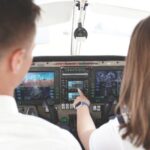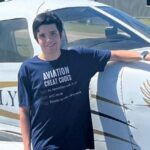By: Steven Daun, National Chief Pilot
You have decided to earn your private pilot certificate. The first half of your training is going well, and you just soloed. Now it is time to get ready for the next step in your training. The solo cross country. This article will discuss what you need to do to prepare for one of the most exciting days of your life.
At first, it may seem overwhelming. But if you break it down into parts, it becomes much more manageable.
Once you select your destination and the airplane that you are going to fly, you will then need to follow a series of coordinated steps.
The first step that we need to do is assess if you, the pilot, are legal to fly. You can do this by reviewing the IMSAFE checklist and your pilot certificates.
The next step is to determine if your aircraft is legal to fly. Are all the legal documents present in the airplane? Are the logbooks up to date, and have the inspections been completed? Does the aircraft have the equipment necessary for you to fly your cross country?
Once you know that you and the aircraft are good to go, you will then need to continue with your cross-country planning.
Call flight service and request a full briefing for your departure airport, enroute plan, and destination airport. The briefer will review current and forecasted conditions with you at the time of departure, during the time you are enroute, and what to expect when you arrive at your destination airport.
Once equipped with the current weather, you can begin plotting out your final route and considering your weather briefing and any NOTAMS that they may have given to you. It is important to remember to develop contingency plans for alternate airports and possible emergencies during your final planning. You should also make sure that you understand what effect the current and forecasted weather will have on your fuel burn and aircraft performance.
The last step of the flight planning process is to calculate your weight, balance, and aircraft performance data. This will vary depending on the aircraft and fuel load that you are carrying. Never use the same weight and balance twice. The prudent pilot will always calculate a new weight and balance based on the current conditions regardless of how similar they may be.
Now that you are ready for your solo cross country, your instructor will review your flight planning and calculations, give you the appropriate signoff(s) and send you on your way.
When you return from your cross country, take a few minutes to appreciate what you have accomplished. Now you can begin preparing for your checkride!










